








































































About Our Inn
After years of exploring inns, and talking to what seemed like hundreds of different innkeepers, we started looking for a suitable location for what would become our Inn. We loved Lawrence, Kansas, home of the University of Kansas, because it is a place which is filled with youth, lots of fun activities, and it is also a very beautiful community. Lawrence is a place where the young at heart can thrive and stay young.
We decided to build a 10 guest room bed and breakfast in a rural setting one mile outside the city limits of Lawrence, Kansas, just far enough outside the city to be in the country but close enough to enjoy all of the city conveniences. The house is Victorian in style with wrap-around porches, and because we are in the country, a big white barn was a "must have" to create a turn-of-the-century farm setting and provide space for an event centre.
Weddings
Your Happily Ever After...Starts Here
Located in the Kansas River Valley, just one mile north of Lawrence, Kansas, the Inn has helped couples plan their special days for more than 23 years. Sitting on 7.5 acres, the Victorian Veranda comes with a beautiful garden ceremony site, a 5,800-square-foot Party Barn for receptions, and a 10 guest room bed and breakfast to accommodate overnight guests.
Whether your perfect day is rustic, classic, elegant, vintage, modern or anything in-between, the Victorian has everything you need.
The White Barn
We have just redecorated our reception venue/ barn. It was our goal to create a venue that brides would find easy to decorate and would let their personalities shine through.
We decided to change the color pallet of our barn to a few shades of white. This was to allow brides who choose our venue to use the colors of their liking without being concerned that they would clash with our existing barn colors.
We are all familiar with the beautiful Christmas cards that have a red cardinal in a background of a white snowy setting.
It is important to us that the wedding colors you choose stand out. In other words, we will be letting you start with a new blank canvas.
Whether you are looking for the rustic barn or the elegant look, we are hoping to provide a great backdrop for either.
Corporate Retreats
Hold your meeting a world away from the office. Our Corporate Retreats are the ultimate in thinking outside the box.
The Inn offers a unique experience for your next corporate retreat. Located in the rich agricultural valley of the Kansas River, our country inn offers a retreat package that gives your company exclusive use of the farm for a one-of-a-kind experience.
Stepping outside the corporate box can be a challenge. The peaceful surrounding and the natural beauty of the river valley can eliminate workplace distractions and dissolve the ingrained habits and hierarchies that interfere with teambuilding and creative problem solving. If it is time for a change of scenery, leave the conference room behind and treat your team to the soothing beauty and relaxation of rural Kansas with an innovative retreat at our Inn.
Guest Rooms
Each of the Inn's 10 guest rooms has its own private bath and features either a king or queen-size bed. The Inn was built to modern day standards but has the décor of a time gone by. All of the rooms have been decorated with wallpaper and complementary paint colours.
Guest Room 1
Located on the first floor, features free WI-FI, breakfast in the morning, king-size bed, a recliner, a television, and a private bath with shower and tub combination.
Guest Room 2
Located on the first floor, features free WI-FI, breakfast in the morning, queen-size bed, handicap accessible, and a private bath with tub shower combination.
Guest Room 3
Located on the first floor, features free WI-FI, breakfast in the morning, queen-size bed, and a private bath with tub shower combination.
Guest Room 4
Located on the second floor, features free WI-FI, breakfast in the morning, queen-size bed, and a private bath with tub shower combination.
Guest Room 5
Located on the second floor, features free WI-FI, breakfast in the morning, queen-size bed, a day bed (single bed), and a private bath with tub shower combination.
Guest Room 6
Located on the second floor, features free WI-FI, breakfast in the morning, king-size bed, and a private bath with tub shower combination.
Guest Room 7
Located on the second floor, features free WI-FI, breakfast in the morning, queen-size bed, and a private bath with tub shower combination.
Guest Room 8
Located on the second floor, gas log fireplace, features free WI-FI, breakfast in the morning, king-size bed and a private bath with tub shower combination.
Guest Room 9
Located on the second floor, features free WI-FI, breakfast in the morning, king-size bed, and a private bath with tub shower combination.
Guest Room 10
Located on the second floor, features free WI-FI, breakfast in the morning, king-size bed, and a private bath with tub shower combination.
Breakfast And Dining Rooms
The Breakfast Room has sunny bay windows near which you can enjoy a delicious breakfast. The Formal Dining Room is available for large parties and meetings.
Gardens
Imagine walking down a brick path, with white doves soaring overhead and butterflies dancing in the breeze, in a beautiful flower filled garden and the sound of a water falling in the background. Your friends and family are surrounding you on your way to meet the one you are going to spend the rest of your life with. You are in the Inn's Wedding Garden to start a very happy ever after...
The Garden was created to provide an intimate setting for your wedding. Many flowers have been included that are a natural attractor of butterflies, their presence adds a magical touch to your already special occasion. Your vows are exchanged near the garden waterfall that creates a wonderful sound of water falling into the pond below.
The Wedding Garden
The wedding garden is surrounded by towering cottonwood trees providing shade for below. These trees provide a pleasant sound as their leaves move in the Kansas breeze.
Early in the spring the forsythia bushes provide a bright yellow splash of colour; this is soon followed shortly by hundreds of white blooming irises.
The garden has a number of arbors and a pergola to provide an added dimension and also provide a support for many different climbing plants. Numerous hanging baskets allow the garden colors to be changed periodically plus adding another element of beauty.
The Wedding Garden is located just out the door of the Inn so you have only a few short steps to your very special moment. The Big White Barn for your reception likewise adjoins the garden - everything is very convenient.
The staff here at the Inn takes great pride in the wedding garden and is constantly working to keep the flowers beautiful and the grounds maintained.
The Patio Garden
The patio and patio garden area is a wonderful area for a informal gathering or other activities such as a rehearsal dinner.
The Monarch Garden
Monarch Garden Established
Our Monarch Garden this fall had many thousands of butterflies and a large percentage of them were Monarchs. It was so much fun and enjoyment to see them landing on the wildflowers and Zinnias in addition to floating in the garden with such grace and beauty. We had put out milkweed and planted a number of nectar providing plants. The wildflowers also provided wonderful settings for photos. Now it is our goal to receive the Monarch Flyway designation given by Monarch Watch program located at the University of Kansas. Application has been submitted. Bring your camera and come see us.
Lawrence, Kansas
Lawrence is the county seat of Douglas County, United States, and sixth-largest city in Kansas. It is in the northeastern sector of the state, astride Interstate 70, between the Kansas and Wakarusa Rivers. As of the 2020 census, the population of the city was 94,934. Lawrence is a college town and the home to both the University of Kansas and Haskell Indian Nations University.
Lawrence was founded by the New England Emigrant Aid Company (NEEAC), and was named for Amos A. Lawrence, a Republican abolitionist originally from Massachusetts, who offered financial aid and support for the settlement. Lawrence was central to the "Bleeding Kansas" period (1854–1861), and the site of the Wakarusa War (1855) and the Sacking of Lawrence (1856). During the American Civil War it was also the site of the Lawrence massacre (1863).
Lawrence began as a center of free-state politics. Its economy diversified into many industries, including agriculture, manufacturing, and education, beginning with the founding of the University of Kansas in 1865 and Haskell Indian Nations University in 1884.
History
Settlement and early years
The Kaw people, also known as the Kansa, settled the region including what is now Lawrence in the late 17th or early 18th century. A series of treaties with the U.S. government compelled the Kaw to relinquish the land to the Shawnee and their Indian Reservation, established in 1830. The Kansas Territory was established in May 1854. During this period, the Oregon Trail ran parallel to the Kansas River, roughly through the area where Lawrence is now. A hill in the area, then known as Hogback Ridge and now known as Mount Oread, which sits on the water divide separating the Kansas and Wakarusa River, was used as a landmark and outlook by those on the trail. While the territory was technically closed to settlement until 1854, there were a few "squatter settlements" in the area, especially just north of the Kansas River.
Lawrence was founded "strictly for political reasons" having to do with slavery, which was heavily debated in the United States in the early to mid-1800s. Northern Democrats, led by Senators Lewis Cass of Michigan and Stephen A. Douglas of Illinois, promoted "popular sovereignty" as a middle position on the slavery issue. Its proponents argued it was more democratic, as it allowed the citizens of newly organized territories (and not Washington, D.C. politicians) to have a direct say as to the legality of slavery in their own lands. Meanwhile, enemies of the bill, especially in the north, derisively called this idea "squatter sovereignty". Douglas eventually made popular sovereignty the backbone of his Kansas–Nebraska Act—legislation that effectively repealed the Missouri Compromise of 1820 and created the territories of Kansas and Nebraska—which passed Congress in 1854.
The Christian abolitionist and Protestant minister Richard Cordley later noted that after the bill became law, "there was a feeling of despondency all over the north" because its passage "opened Kansas to [the possibility of] slavery [which many] thought [was] equivalent to making Kansas a slave state." This was largely because nearby Missouri allowed slavery, and many rightly assumed the first settlers in Kansas Territory would come from Missouri, bringing their penchant for slavery with them.
In time, anger at the Kansas-Nebraska Act united antislavery forces into a movement committed to stopping the expansion of slavery, eventually institutionalized as the Republican Party. Many slavery opponents decided to "meet the question [of slavery in Kansas] on the terms of the bill itself" by migrating to Kansas, electing antislavery legislators, and eventually banning slavery altogether. These settlers soon became known as "Free-Staters". Even before the bill passed, some people already had this idea. In early May 1854, four men—Thomas W. and Oliver P. Barber, Samuel Walker, and Thomas M. Pearson—toured the new territory with the intention of finding a good place to settle. Their travels included what would become Lawrence, passing up on the spur of Hogback Ridge. The Kansas-Nebraska Act passed while they were in the territory, and they were instrumental in convincing others to come. In his book A History of Lawrence (1895), Cordley wrote:
The most systematic and extensive movement [to populate Kansas], however, was made [by] "The New England Emigrant Aid Company" ... The men engaged in it, Eli Thayer [a Republican in the United States House of Representatives], Amos A. Lawrence [a Republican abolitionist and businessman], and others, began their work at once, arousing public interest and making arrangements to facilitate emigration to Kansas. As early as June, 1854, they sent Dr. Charles Robinson, of Fitchburg, and Mr. Charles H. Branscomb, of Holyoke, to explore the territory and select a site for a colony ... [Previously] Robinson [had journeyed to Kansas, during which] his party climbed the hill along this spur, and looked off over what was afterwards the site of Lawrence. They marked the beauty of the spot and the magnificence of the view. Whether they thought then of what might afterwards occur is not known; but when the time came to select a location for the first colony, Dr. Robinson remembered this view from the hilltop, and this doubtless had much to do in the final decision. When he was asked, therefore, to go and explore the country with a view to locating colonies, it was not altogether an unknown land to him.
Branscomb was tasked with exploring the Kansas River up to about Fort Riley, while Robinson scouted land near Fort Leavenworth and the nearby city of the same name; after assessing the territory they had surveyed, the two recommended the New England Emigrant Aid Company (NEEAC) send its settlers to claim territory along the Oregon Trail near Hogback Ridge. The two likely chose this site because it was the "first desirable location where emigrant Indians had ceded their land rights."[26] The area was also attractive because it was close to not only on the Oregon Trail, but also the Santa Fe and the 1846 Military Trails.
Concurrent with Robinson and Branscomb's exploration, the NEEAC was soliciting some of its members to settle in Kansas.[24] At first, the NEEAC wanted to send a somewhat sizeable group of settlers to claim the land, but a cholera outbreak in the Missouri Valley prevented it. In the end, a group of only 29 men—which Eli Thayer later called the "pioneer colony"—volunteered for the job. Led by Branscomb, these pioneers left Boston, Massachusetts, and set out for Kansas Territory on July 17, 1854; according to Thayer's antislavery newspaper the Kansas Crusader for Freedom, "Immense crowds had gathered [in Boston] at the station to give them a parting God-speed. They moved out of the station amid the cheering of the crowds who lined the track for several blocks." In late July, the group met Robinson in St. Louis, and he discussed the next leg of the journey with them and provided them with transportation. The pioneers arrived in Kansas Territory near the end of July, and at about noon on August 1, they ate their first meal on Hogback Ridge itself, which was soon renamed Mount Oread after the Oread Institute in Worcester, Massachusetts. Immediately thereafter, about half this party set off to claim land in the nearby countryside, where about 15 of the original settlers remained, and began to establish a city between Mount Oread and the Kansas River roughly where Massachusetts Street now runs.
While all of this was unfolding, a followup party of 67, guided by Robinson and Samuel C. Pomeroy (an abolitionist and a Republican member of the United States House of Representatives), left Worcester, Massachusetts, on August 31; along the way to Kansas, settlers of similar political inclinations joined this group, and when the party reached its destination on September 9–11, it had grown to about 114 people. This second party included about ten women, a number of children, and several musicians. A third group of settlers arrived in the vicinity of the future city on October 8–9, but many "became disgusted by the outlook" of the settlement and returned to New England, feeling they had been "deceived" by the NEEAC. A fourth group of settlers arrived on October 30, followed by a fifth on November 20 and a sixth on December 1. On September 18, the early colonists convened and established a "voluntary municipal government", and by September 20, the settlers had approved a constitution that included principles of prohibitionatory Maine law to govern their town. The settlement was created against threats by pro-slavery men that the free-staters ought to be "driven from the country." The first rally of forces from Lawrence was the night of September 30, done to protect Thomas J. Ferril, a free-state Methodist preacher from Missouri. His assailants surrounded his house, threatening violence and to destroy his property, but retreated after they saw a body of armed free-staters without injury to either side. The next day, a woman tore down a free-state man's tent. Pro-slavery men rallied to prevent the tent's reconstruction by a group of about 20 armed free-staters, but it was completed without violence. The next day, a sizeable band of pro-slavery men appeared, threatening a repeat of the attack, but upon seeing their opponents ready, they retreated with renewed threats of vengeance.
When the settlers arrived, most had called their fledgling city simply Wakarusa, after the nearby river of the same name, but other names were considered, such as New Boston (in recognition of both the NEEAC's city of operation and the hometown of many early settlers) and Plymouth (after Plymouth Rock). Meanwhile, settlers from Missouri derisively called it "Yankee Town", due to its New England connections. Another name considered around this time was Lawrence. Many approved of this name in honor of Amos A. Lawrence, an Ipswich-based businessman and noted abolitionist, who, Cordley writes, was "a man of wide personal influence" and "one of the first men of means" to fund the Emigrant Aid Company. Others hoped that if they named their town after him, Lawrence would be inclined to support them with monetary donations, which proved correct. Another factor making "Lawrence" a popular choice was that it had "no bad odour attached to it in any part of the Union." On October 1, the settlement's leaders voted to approve "Lawrence" as the name of their new city, and on October 17, the citizens drew territory lots so as to begin erecting homes and businesses. Around this time, the settlers got into a heated argument with pro-slavery squatters, who were hoping to establish a city named Excelsior on the land where Lawrence was being constructed. These pro-slavers threatened violence against anyone who stood in their way, but eventually acquiesced to the New Englanders, and no open conflict occurred.
In early October 1854, the first governor of the Kansas Territory, Andrew Horatio Reeder, arrived, had a reception and a festival, and after a welcoming speech by Pomeroy, made a conciliatory speech urging harmony and order, while evading the slavery question. Lawrence's first winter was characterized by great hardship, as the people predominantly lived in sod houses and "shanties made of clap-boards." About two miles (3.3 km) south of Lawrence, at the first election on November 29, 1854 to elect Congressional delegates, there was a commotion; it ended with a man named Henry Davis attacking a free-stater man named Lucius Kibbee with an Arkansas toothpick knife. The fight ended when Kibbee shot Davis, making this Kansas's first homicide.
In June 1855, a meeting was held in Lawrence, at which resolutions were adopted intending to resist any laws that may be passed by the legislature, and they declared that the legislature was elected by "armed usurpers from Missouri." This paved the way for a larger convention on June 25. Between June 8 and August 15, 1855, seven meetings were held in Lawrence for the purposes of resisting the legislature. The free-state leaders sent George W. Deitzler to the east to secure weapons from other anti-slavery people. Amos Lawrence and others sent crates full of rifles, to which they labeled "books" because "the border ruffians had no use for books, [and] they came through without being disturbed." With the help of Horace Greeley, a howitzer was sent to Lawrence. On August 27, 1855, the proslavery faction in Douglas County (based primarily out of the territorial capital, Lecompton, as well as smaller satellite settlements like Franklin and Lone Star) got a boost when acting territorial governor Daniel Woodson appointed the zealously proslavery settler Samuel J. Jones to the office of county sheriff. Then, in October 1855, the outspoken abolitionist John Brown arrived in the Kansas Territory; he brought with him a wagon-load of weapons with which he intended to use to fight off "Satan and his legions" (i.e., proslavery settlers).
For much of 1855, the pro- and antislavery factions existed uneasily. Then on November 21, 1855, after an intense verbal altercation, the proslavery settler Franklin N. Coleman shot the Free-Stater Charles Dow in the head, killing him. The murder was the culmination of a long-simmering feud between them, as for some time they had bickered about a land claim near the Hickory Point post office, about 14 miles (23 km) south of Lawrence. According to the Border War Encyclopedia, "Politics had not motivated Coleman to kill Dow, but the murder marked the genesis of the violent political divisions that characterized Kansas for the next 10 years." When Jones investigated the crime, Coleman argued he had acted in self-defense. The sheriff sided with his proslavery compatriot and chose to instead arrest Dow's free state affiliate Jacob Branson for disturbing the peace. Branson was quickly rescued by Samuel Newitt Wood and a gang of Free-Staters by breaking him out of jail. He was rescued at one in the morning, just two hours after the arrest. As the gang of free-staters were heading back, they were unsure of what to do. They consulted with Charles Robinson, and they all realized the pro-slavery people would label this act of breaking someone out of jail as an insurrection. They realized the militia would be called to carry out the arrests of those who broke Branson out of jail, but that they would likely use it as an excuse to destroy Lawrence. The rest of the city was unaware of the rescue at this time. It was decided that the men who broke Branson out of jail would need to keep out of the way. Robinson informed the others at a meeting of citizens that morning, to which they agreed. They then started preparing the city for defense.
Sacking
To calm the increasingly belligerent settlers, the governor of the Kansas Territory, Wilson Shannon, called on the Kansas militia to intervene. Shannon had intended for the militia to be composed of Kansans, but Jones mustered a small army of 1,200–1,500 proslavery men, all but about 50 came from Missouri. When the citizens of Lawrence learned of Jones's army, they raised up a defensive militia of 600–800 men armed with "Beecher's Bibles". Robinson was chosen to direct the city's military operations, the future state senator James Lane was selected as his second-in-command, and a "committee of safety" was also created, which organized squads of about 20 men to keep watch over the city. Lawrence was additionally aided by John Brown and his four sons: John Jr., Oliver, Owen, and Watson. Five forts of earthwork or rifle pits were constructed, and a solid defense was prepared. While both sides were ready for a fight, an outright clash between the two militias was prevented at least in part by the harsh Kansas winter. On December 8, Shannon had had enough and ordered representatives from both sides to meet at the proslavery stronghold of Franklin to sign a peace treaty. Terms were agreed to, and eventually, after much persuading, the Missouri army reluctantly left the area. This conflict, despite its rather diminutive size and scale, would later be known as the "Wakarusa War".
A few weeks later, on May 11, Federal Marshal Israel B. Donaldson proclaimed the act had interfered with the legal execution of warrants against select antislavery settlers. This proclamation was bolstered by a Kansas grand jury's presentment that "the building known as the 'Free State' Hotel' [sic] in Lawrence had been constructed with a view to military occupation and defence, regularly parapetted and port holed, for the use of cannon and small arms, thereby endangering the public safety, and encouraging rebellion and sedition in this country". Donaldson, Jones, and Missouri senator David Rice Atchison consequently raised another army of around 800 Southerners. Ostensibly this army's purpose was to enforce the legal arrest warrants, but the group was also motivated by a desire to stamp out the Free-Stater nest that was Lawrence.
On May 21, Donaldson and Jones rode into town and arrested those who had evaded them. While the citizens of Lawrence hoped the officers would leave peacefully, this did not come to pass. Donaldson dismissed his men, who Jomes immediately deputized. The sheriff was then joined by more followers and together they began to sack the city. After seizing the house of Charles Robinson (who had recently been arrested in Missouri, and was held in prison near Lecompton on grounds of treason) to serve as his headquarters, Jones and his men attacked the offices of the antislavery newspapers. The attackers smashed the presses, tossed the type into the nearby Kansas River, and threw printed copies of the newspapers into the wind. Afterward, the proslavery mob shot the Free State Hotel with a cannon and burnt it down. Jones and his men then pillaged $30,000 worth of valuables. When Jones left the city, he and his men lit Robinson's house on fire for good measure.
Although the city was thoroughly ransacked, the human cost of the attack was low: only one person—a member of Jones's posses—died during the attack when he was struck by a piece of falling masonry. In late September 1856, another sack seemed nigh when, according to the Kansas State Board of Agriculture 1878 Biennial Report, "2,700 proslavery men appeared in sight of Lawrence, and the city was temporarily defended by Free-State men, under the command of Maj. J. B. Abbott". However, this threat was neutralized when the recently-installed territorial governor John W. Geary realized what was about to happen and called for federal reinforcements to defend the city.[33][48]
In both 1855 and 1857, Lawrence received a charter from the proslavery government in Lecompton, but the citizens, being adamant in their opposition to the "Bogus Legislature", refused to accept it, as it would have organized Lawrence under proslavery laws. In July 1857, the citizens of Lawrence then attempted to secure an "official" city charter from the extralegal Free-State legislature before issuing one themselves. This act was seen as one of bold-faced insurrection by the newly-installed territorial governor Robert J. Walker; as a result, on July 15, 1857 Walker ordered William S. Harney to send a regiment of soldiers to watch over the city and impose martial law. These troops remained in the vicinity of Lawrence until the territorial elections in October of that year. By this time, it seemed as if the struggles of Lawrence's early citizens were coming to fruition. In the election of 1857, free-staters gained the upper hand and were able to oust the proslavery majority from the territorial legislature. By the start of the next year, Samuel Jones—long the enemy of Lawrence's free state population—resigned his post as sheriff and left the territory. On January 16, 1858, Lawrence was declared the seat of Douglas County (an honor that previously belonged to Lecompton), and in February, the legislature approved the city charter that had been drafted a little less than a year prior in July. James Blood was then elected the first mayor of the city. Around this time, the antislavery legislature often met in Lawrence, which functioned as the de facto capital of Kansas Territory from 1858 until 1861 (although Lecompton was still the de jure seat of the governing body).
Kansas statehood and the American Civil War
On October 4, 1859, the Wyandotte Constitution was approved in a referendum by a vote of 10,421 to 5,530, and after its approval by the U.S. Congress, Kansas was admitted as a free state on January 29, 1861. By the time the Wyandotte Constitution was framed in 1859, it was clear the proslavery forces had lost in their bid to control Kansas. But while Kansas's entrance into the Union as a free state arguably ended the Bleeding Kansas period, it coincided with the outbreak of the American Civil War. Kansas's admission as a free state immediately followed the departure of the seceding states' pro-slavery congressmen, who until then had blocked it.
During the war, Lawrence became a stronghold for Jayhawker guerilla units (also known as "Red Legs"), led by James Lane, James Montgomery, and "Doc" Jennison, among others. These groups raided parts of western Missouri, stealing goods and burning down farms; it was a common belief by Southerners that the goods snatched by these Jayhawkers were stored in Lawrence. On August 21, 1863, Lawrence was attacked and destroyed by William Quantrill and hundreds of his irregular Confederate raiders. Most houses and businesses in Lawrence were burned and between 150 and 200 men and boys were murdered, leaving 80 widows and 250 orphans. About $2,000,000 worth of property (equivalent to $44,016,216 in 2021) was destroyed. The Plymouth Congregational Church in Lawrence survived the attack, but a number of its members were killed and its records were destroyed.
Following the Lawrence Massacre, the survivors and their Unionist allies began to clean up the damage and restore their settlement. After a very bitter winter that forced the citizens to temporarily put their work on hold, rebuilding continued into 1864, and was completed with a zeal that Richard Cordley described as akin to "a religious obligation." Given the trauma of 1863, the citizens of Lawrence were on edge during this period of rebuilding; Cordley notes, "Rumors [of guerrilla attacks] were thick and the people [of Lawrence] were particularly sensitive to them." Consequently, Lawrence citizens organized themselves into companies to protect the city. Around this time, the federal government also erected several military posts on Mount Oread (among them Camp Ewing, Camp Lookout, and Fort Ulysses) to keep guard over the city. However, no further attacks were made on Lawrence, and these installations were eventually abandoned and dismantled after the war.
Post-Civil War
Attempts to begin a university in Kansas were first undertaken in 1855, but it was only after Kansas became a state in 1861 that those attempts saw any real fruition. An institute of learning was proposed in 1859 as The University of Lawrence, but it never opened. When Kansas became a state, provision was included in the Kansas Constitution for a state university. From 1861 to 1863 the question of where the university would be located—Lawrence, Manhattan or Emporia—was debated. On January 13, 1863, Manhattan was made the site of the state's land-grant college, leaving only Lawrence and Emporia as candidates. The fact Lawrence had $10,000 plus interest donated by Amos Lawrence plus 40 acres (160,000 m2) to donate for the university had great weight with the legislature. Eventually, Lawrence beat out Emporia by one vote, and in 1866, the University of Kansas (KU) was opened to students.
The first railroad that connected Lawrence was built in 1864, starting from Kansas City. It was surveyed by the Union Pacific Railway, Eastern Division, and the first train to Lawrence traveled on November 28, 1864. The first train to operate in Kansas south of the Kansas River did so by crossing the river in Lawrence on November 1, 1867.
Facing an energy crisis in the early 1870s, the city contracted with Orlando Darling to construct a dam across the Kansas River to help provide the city with power. Frustrated with the construction of the dam, Darling resigned and the Lawrence Land & Water Company completed the dam without him in 1873; however, only when J.D. Bowersock took over the dam in 1879 that the constant damage to the dam ceased and repairs held up. The dam made Lawrence unique which helped in winning business against Kansas City and Leavenworth. The dam closed in 1968 but was reopened in 1977 with help from the city, which wanted to build a new city hall next to the Bowersock Plant.
The first wind-powered mill in Kansas was built in Lawrence in 1863 near the corner of what is now 9th Street and Emery Road. It was partially destroyed during Quantrill's Raid, but it was rebuilt in 1864 at a cost of $9,700. It continued to be operational until July 1885, but on April 30, 1905, it was destroyed in a fire.
In 1884 the United States Indian Industrial Training School was opened in Lawrence, a Native American Boarding School with the goal of assimilation. Boys were taught the trades of tailor making, blacksmithing, farming and others while girls were taught cooking and homemaking. Most food was produced on site at the Haskell Farm and students were expected to work in addition to their training. In 1885, the school expanded to include academic training and a commercial department with five typewriters opened, starting the first touch-typing class in Kansas. In 1887 the name was changed to the Haskell Institute, after Dudley Haskell, a legislator responsible for the school being in Lawrence. In 1993 the name was changed again to Haskell Indian Nations University.
20th century and beyond
In 1888, Watkins National Bank opened at 11th and Massachusetts. Founded by Jabez B. Watkins, the bank would last until 1929. Watkin's wife Elizabeth donated the bank building to the city to use as a city hall. In 1970, the city built a new city hall and after extensive renovations, the bank reopened in 1975 as the Elizabeth M. Watkins Community Museum.
In 1903, the Kansas River flooded causing property damage in Lawrence, especially North Lawrence. The water got as high as 27 feet and water marks can still be seen on some buildings especially at TeePee Junction at the U.S. 24–40 intersection and at Burcham Park. Lawrence would be hit by other floods in 1951, where the water rose over 30 feet, and in 1993 but with the reservoir and levee system in place, Lawrence only had minimal damage compared to the other floods.
Also in 1903, Theodore Roosevelt visited Lawrence on his way to Manhattan where he gave a short speech and dedicated a fountain at 9th & New Hampshire. The fountain was later moved to South Park next to the gazebo. Roosevelt would visit Lawrence again in 1910 after visiting Osawatomie where he dedicated the John Brown State Historical Site and gave a speech on New Nationalism.
In 1871, the Lawrence Street Railway Company opened and offered citizens easy access to hotels and businesses along Massachusetts Street. The first streetcar was pulled by horses and mules and the track just ran along Massachusetts Street. After the 1903 flood, the Kansas River bridge had to be rebuilt but was not considered safe for a streetcar to pass over. The Lawrence Street Railway Company closed later that year. In 1907, C.L. Rutter attempted to bring back a bus system, after having failed in 1902. In 1909, a new streetcar system was implemented putting Rutter out of business and lasting until 1935. In 1909, the streetcar company created Casey's Coaster (also known as Daisy's Dozer), a wooden roller coaster which lasted from 1909 to the 1920s, in Woodland Park.
In 1921, Lawrence Memorial Hospital opened in the 300 block of Maine Street. It started with only 50 beds but by 1980, the hospital would expand to 200. LMH has been awarded several awards and recognitions for care and quality including The Hospital Value Index Best in Value Award and is ranked nationally in the top five percent for heart attack care by the American College of Cardiology.
In 1927, high school classes were offered at Haskell Institute. Haskell's Athletics were well-knock; they were known as the "Powerhouse of the West" with victories over Oklahoma A&M, Kansas State, Texas, and Nebraska. The Olympian Jim Thorpe graduated from the program. The last high school class graduated in 1965, the school was transitioning to post-high school education. In 1970, the school became known as Haskell Indian Junior College, and in 1993, "Haskell Indian Nations University".
In 1929 Lawrence began celebrating its 75th anniversary. The city dedicated Founder's Rock, commonly referred to as the Shunganunga Boulder, a huge red boulder brought to Lawrence from near Tecumseh. The rock honors the two parties of the Emigrant Aid Society who first settled in Lawrence. Lawrence also dedicated the Lawrence Municipal Airport on October 14.
In 1943, the federal government transported German and Italian prisoners of World War II to Kansas and other Midwest states to work on farms and help solve the labor shortage caused by American men serving in the war effort. Large internment camps were established in Kansas: Camp Concordia, Camp Funston (at Fort Riley), Camp Phillips (at Salina under Fort Riley). Fort Riley established 12 smaller branch camps, including Lawrence. The camp in Lawrence was near 11th & Haskell Avenue near the railroad tracks. The camp would close by the end of 1945.
In 1947, Gilbert Francis and his son George opened Francis Sporting Goods downtown, selling mostly fishing and hunting gear. A decade later they moved across the street to larger retail space at 731 Massachusetts Street, enabling them to expand into other sporting goods. In November 2014, in the wake of the opening of a new Dick's Sporting Goods location in Lawrence, Francis Sporting Goods, announced its retail business within what had become Lawrence's Downtown Historic District would close by the end of the year, allowing the Francis family to focus on supplying uniforms and equipment to teams.
In the early 1980s, Lawrence grabbed attention from the television movie The Day After. The TV movie first appeared on ABC but was later shown in movie theaters around the world. The movie depicted what would happen if the United States were destroyed in a nuclear war. The movie was filmed in Lawrence, and hundreds of local residents appeared in the film as extras and in speaking roles.
In 1989, the Free State Brewing Company opened in Lawrence becoming the first legal brewery in Kansas in more than 100 years. The restaurant is in a renovated inter-urban trolley station in downtown Lawrence.
In 2007, Lawrence was named one of the best places to retire by U.S. News & World Report. In 2011, the city was named one of America's 10 best college towns by Parents & Colleges.
In 2020, a report commissioned by the Lawrence City Council concluded the city needed to promote a vital expansion or risk turning into an unaffordable albatross, saying "If Lawrence doesn't attract more kinds of businesses, it could become a bedroom community that’s not affordable for people who don't commute elsewhere."
Geography
Lawrence is located at coordinates 38.9716689, -95.2352501 in the state of Kansas, approximately 25 miles (40 kilometers) east of Topeka, and 35 mi (56 km) west of Kansas City, Kansas. Though Lawrence has a designated elevation of 866 feet (264 m), the highest elevation is Mount Oread on the University of Kansas campus with an elevation of 1,020 feet (310 m).
The city lies on the southern edge of the Dissected Till Plains, bordering the Osage Plains to the south. According to the United States Census Bureau, the city has a total area of 34.26 square miles (88.73 km2), of which, 33.56 square miles (86.92 km2) is land and 0.70 square miles (1.81 km2) is water, and is split between Wakarusa Township and Grant Township with small portions in Lecompton, Kanwaka and Clinton Townships.
Lawrence is between the Kansas and Wakarusa Rivers. Several major creeks flow through Lawrence. Burroughs Creek in East Lawrence (named after the writer William S. Burroughs, who retired in East Lawrence) and Baldwin Creek in northwestern Lawrence empty into the Kansas River. Yankee Tank Creek in southwest Lawrence and an unnamed creek that flows through central Lawrence converge with the Wakarusa River south of the city. Yankee Tank Creek is dammed to form Lake Alvamar, which was originally called Yankee Tank Lake. The Wakarusa River was dammed to form Clinton Lake. Potter Lake is on the University of Kansas Campus and Mary's Lake is in southeastern Lawrence within Prairie Park. The Haskell-Baker Wetlands, maintained by Haskell University and Baker University, is an extensive open space in the southern part of the city that features wetlands, native plants, hiking and biking trails, and interpretative signage about the prairie and wetland ecosystems.
Lawrence has 54 parks which include community and neighborhood parks, trails, cemeteries and nature preserves. A new, multi-use trail system called the Lawrence Loop ("the Loop") encircles the city and, when fully completed, will create a 22-mile paved recreational trail, a green transportation network, and multiple opportunities for environmental restoration. Community parks include South Park, Buford Watson Park, Broken Arrow Park, Riverfront Park, Holcomb Park, "Dad" Perry Park, Centennial Park and Prairie Park. Cemeteries include Oak Hill, Maple Grove and Memorial Park. The first cemetery in Lawrence, Pioneer Cemetery, is on the University of Kansas campus and is maintained by KU.
Climate
Lawrence has a humid continental climate (Köppen Dfa), typically experiencing hot, humid summers and cold, dry winters. The monthly daily average temperature ranges from 28.4 °F (−2.0 °C) in January to 78.5 °F (25.8 °C) in July. The high temperature reaches or exceeds 90 °F (32 °C) an average of 32 days a year and 100 °F (38 °C) an average of 1.9 days. The minimum temperature falls to or below 0 °F (−18 °C) on an average 4.9 days a year. Extreme temperatures range from 111 °F (44 °C) on July 13 and 14, 1954 down to −21 °F (−29 °C) on December 22, 1989.
Demographics
2010 census
As of the census of 2010, there were 87,643 people, 34,970 households, and 16,939 families residing in the city. The population density was 2,611.5 inhabitants per square mile (1,008.3/km2). There were 37,502 housing units at an average density of 1,117.5 per square mile (431.5/km2). The racial makeup of the city was 82.0% White, 4.7% African American, 3.1% Native American, 4.5% Asian, 0.1% Pacific Islander, 1.5% from other races, and 4.1% from two or more races. Hispanic or Latino of any race were 5.7% of the population.
There were 34,970 households, of which 24.4% had children under the age of 18 living with them, 35.6% were married couples living together, 8.8% had a female householder with no husband present, 4.0% had a male householder with no wife present, and 51.6% were non-families. 32.0% of all households were made up of individuals, and 6.5% had someone living alone who was 65 years of age or older. The average household size was 2.28 and the average family size was 2.91.
In the city, the population was spread out, with 17.5% of residents under the age of 18; 28.7% of residents between the ages of 18 and 24; 27.4% from 25 to 44; 18.5% from 45 to 64; and 8% were 65 years of age or older. The median age in the city was 26.7 years. The gender makeup of the city was 50.2% male and 49.8% female.
As of 2010 the median income for a household was $41,290, and the median income for a family was $65,673. Males had a median income of $42,362 versus $34,124 for females. The per capita income for the city was $23,666. About 10.7% of families and 23.4% of the population were below the poverty line, including 16.2% of those under age 18 and 7.1% of those age 65 or over.
Lawrence receives an annual average of 39.9 inches (1,010 mm) of precipitation, most of which occurs in the warmer months, and records 96 days of measurable precipitation.[150] Measurable snowfall occurs an average of 8 days per year with 4.6 days receiving at least 1.0 inch (2.5 cm). Snow depth of at least one inch occurs an average of 15.8 days a year.
Economy
Lawrence's economy largely depends on educational institutions, namely The University of Kansas, which is the largest employer in the city as of 2020 with 10,116 employees, followed by Maximus; a call center, Lawrence Memorial Hospital; the city's hospital, and Hallmark Cards.
Arts and culture
The city is known for a thriving music and art scene. Rolling Stone named Lawrence one of the "best lil' college towns" in the country in its August 11, 2005, issue. The New York Times said Lawrence had "the most vital music scene between Chicago and Denver" in a travel column on February 25, 2005. Locally owned bar and music venue The Replay Lounge was named one of Esquire magazine's top 25 bars/venues in the country in 2007.
The Lied Center of Kansas presents Broadway musicals, internationally touring dance companies and headline artists such as The Beach Boys, Kristin Chenoweth, Lyle Lovett and Kansas.
In December 2005, the city announced International Dadaism Month, celebrating the early 20th century art movement. In the spirit of Dada, rather than select a typical calendar month for the occasion, Mayor Dennis "Boog" Highberger set the dates for the "Month" as February 4, March 28, April 1, July 15, August 2, August 7, August 16, August 26, September 18, September 22, October 1, October 17, and October 26, determined by rolling dice and pulling numbers out of a hat.
Lawrence is home to many bands and record labels. Many artists, such as Paw, Mates of State, The New Amsterdams, Kansas, Fourth of July, White Flight, The Anniversary, Minus Story, The Appleseed Cast, Old Canes, Ad Astra Per Aspera, Ghosty, The Esoteric and The Get Up Kids originated in Lawrence or its surrounding areas. KJHK 90.7 FM, the University of Kansas's student-run radio station, is a staple of the local music scene. It won a CMJ award in 2006 for "most improved station," and it was nominated for a Plug Award for best college radio station in 2007.
Lawrence is home to the Gunn Center for the Study of Science Fiction, the first research center in the world dedicated to science fiction studies. Since 1969, the center has offered courses and workshops in science fiction literature and writing, hosted an annual conference, brought speakers to Lawrence, and presented multiple annual awards and scholarships.
Every year since 1959, on the third Thursday of July there is the Massachusetts Street "sidewalk sale," which most businesses on Massachusetts Street offer discounts on their merchandise. The sale is often supplemented by band performances or radio stations playing during the event.
Cliff Jacobs (Nat Dpl Hotel Man (UJ). MPRE. GA Level 5 TEFL) Managing Principal / CEO Exquisite Hotel Consultants (Pty) Ltd Mobile: +27 (0) 84 413 1071 (WhatsApp only) / +27 (0) 61 716 6951 (WhatsApp only) Email: cliff@exquisitehotelconsultants.com Web: https://www.exquisitehotelconsultants.com © All rights reserved Terms and Conditions apply Scroll down to view our Hospitality Properties and Businesses for sale or lease or lease-to-buy or partnership arrangement or management agreement arrangement



 Name: BondExcel
Name: BondExcel Mortgage Origination
We interface with all of the major banks in South Africa to ensure that you get the right home loan solution at the best possible rate.
Looking forward to assist you with your home loan application!
 Name: Businessentials For Hospitality
Name: Businessentials For Hospitality Hospitality Consulting, Accounting, Bookkeeping and Payroll Services
 Name: Capital Efficiency Group
Name: Capital Efficiency Group Corporate Finance, Tax & Accounting and Treasury Services.
Attorneys, Notaries and Conveyancers
 Name: D E I R D R E R E N N I E R S Interior Design
Name: D E I R D R E R E N N I E R S Interior Design Interior Design
 Name: De Leeuw Valuers Cape Town
Name: De Leeuw Valuers Cape Town Property Valuation Services
 Name: E C Mobility
Name: E C Mobility International property, law and immigration
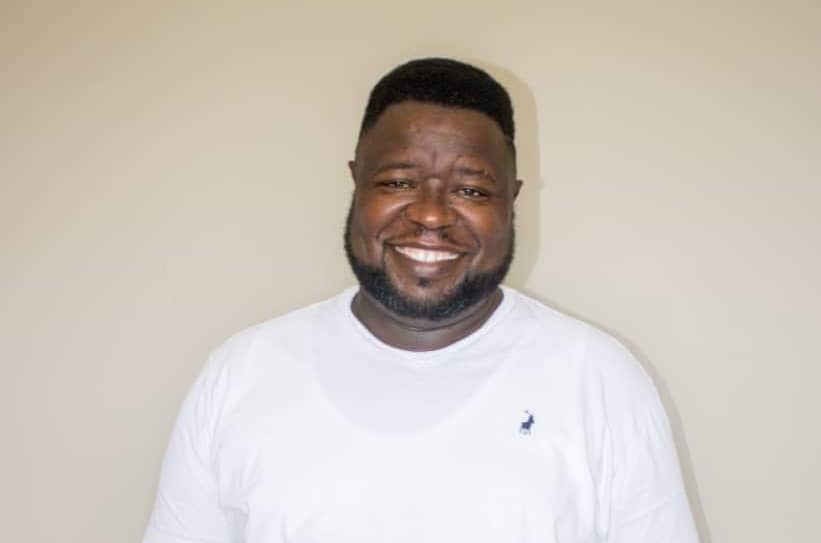 Name: Edward Tokolo Kasete
Name: Edward Tokolo Kasete Real Estate Specialist - Our Associate in Namibia
We offer an international platform of specialist hospitality property and/or business brokering services by listing and marketing for sale or lease or by investment partner arrangement or management agreement arrangement of a variety of hospitality products (i.e. hotels, resorts, boutique hotels, guest houses, guest lodges, B&Bs, game resorts, wine farms, yachts, cruise liners, etc) through our association with EC Mobility (in Portugal and Spain), BON Hotels (Africa), Giovanni Conti (Italy, North and East Africa, Sri Lanka), Nuno Boquinhas (Portugal, Azores, Madeira, Mozambique), Property 24, Seeff Property Services, Harcourts, Realnet, RE/MAX, Dogon Property Group, Rawson Estates, among many other prominent commercial estate agencies throughout Southern Africa - and now we are entering other African Countries on the East and West Coasts of Africa and moving further abroad! To date, Exquisite Hotel Consultants has a presence in over 80 countries - and counting...
Working with the above-mentioned agencies and others provides the largest possible reach nationally and internationally for all prospective buyers and sellers wishing to enter or exit the Hospitality Industry.
Sister websites have been opened in the following countries: United Kingdom: see www.exquisitehotelconsultants.co.uk, and in Germany: see www.exquisitehotelconsultants.de, and in the United States of America: see www.exquisitehotelconsultants.us.
Please note that several of our hospitality properties and/or businesses for sale or lease or through business partnership arrangements or management contracts are officially "Off-Market" - mainly for privacy reasons. Therefore, they are not listed as part of our hospitality properties/businesses for sale or lease stock. Please contact me for further details.
Should you be considering to sell or buy or lease or obtain a partnership arrangement or management agreement arrangement for your hotel, boutique hotel, resort, guest house, B&B, game lodge, game resort, guest farm, yacht or cruise liner etc, I would be most pleased to provide you with further details of our way of working to effectively market and sell your property(ies) and/or business(es).
 Name: Electrolux Professional
Name: Electrolux Professional Food Service, Beverage and Laundry Solutions
Electrolux Professional is a leading global provider of foodservice, beverage and laundry solutions, serving a wide range of customers globally, from restaurants and hotels to healthcare, educational and other service facilities.
 Name: Exquisite Hotel Consultants' Hospitality Training Department
Name: Exquisite Hotel Consultants' Hospitality Training Department Learn to speak Hotel English (one-to-one online course)
Our TEFL trained tutors teach the following functions
The course consists of 21 lessons (4 to 5 one-hour lessons per month).
 Name: FVE Interiors
Name: FVE Interiors Interior Design
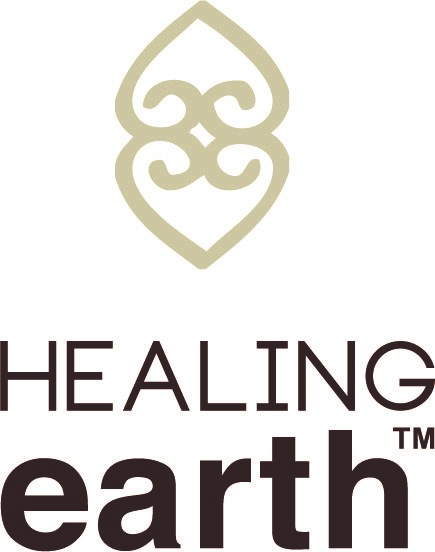 Name: Healing Earth
Name: Healing Earth Hotel Amenities - inspired by Africa
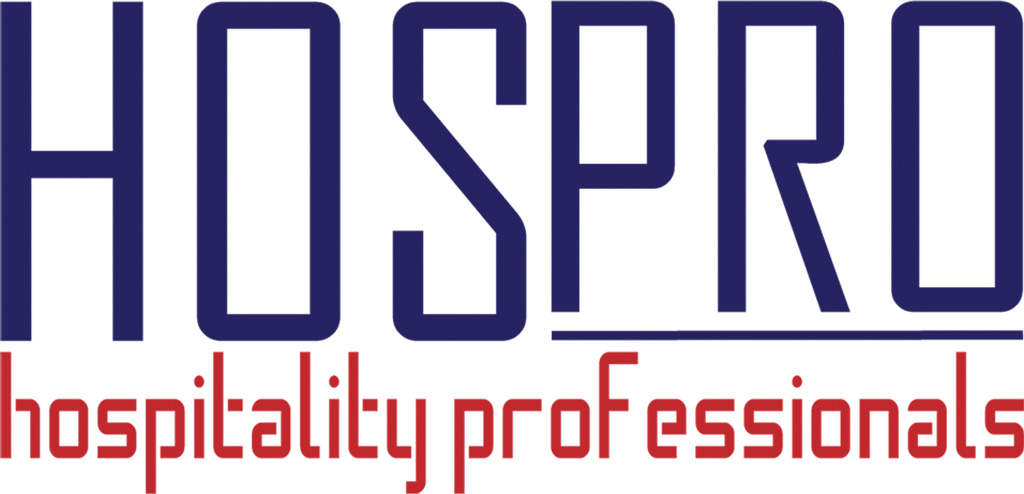 Name: Hospro
Name: Hospro Hospitality Consultancy and Procurement
 Name: Hotel Revenue Management
Name: Hotel Revenue Management Revenue (yield) Management
Online room inventory Distribution & Rates optimisation
Implementation of Best Available Rate (BAR), in conjunction with point 1 & 2
 Name: Indigo Real Estate Agency
Name: Indigo Real Estate Agency Real Estate Agency - Our Associate in Mozambique
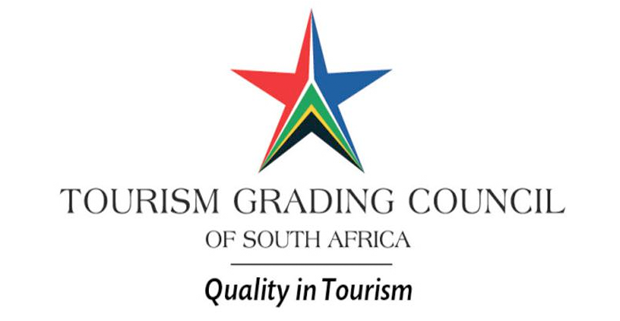 Name: Lisa Dunn - Tourism Grading Assessor
Name: Lisa Dunn - Tourism Grading Assessor Tourism Grading Assessment
 Name: Ooba (Pty) Ltd
Name: Ooba (Pty) Ltd Mortgage Origination
ooba offers you:
 Name: SK Sambu Tours & Transfers
Name: SK Sambu Tours & Transfers Johannesburg based Tours & Transfers Operator
We look forward to being of service to you.
Kind regards
King Sambu
 Name: Soul Private Collection
Name: Soul Private Collection Hotel Management and Marketing
 Name: The Dumb Butler Hospitality Suppliers
Name: The Dumb Butler Hospitality Suppliers Hotel Linen Suppliers
LUX Award Winners 2021 for The Best Hospitality Suppliers. We are a proudly South African brand established in 2006.
We Supply:
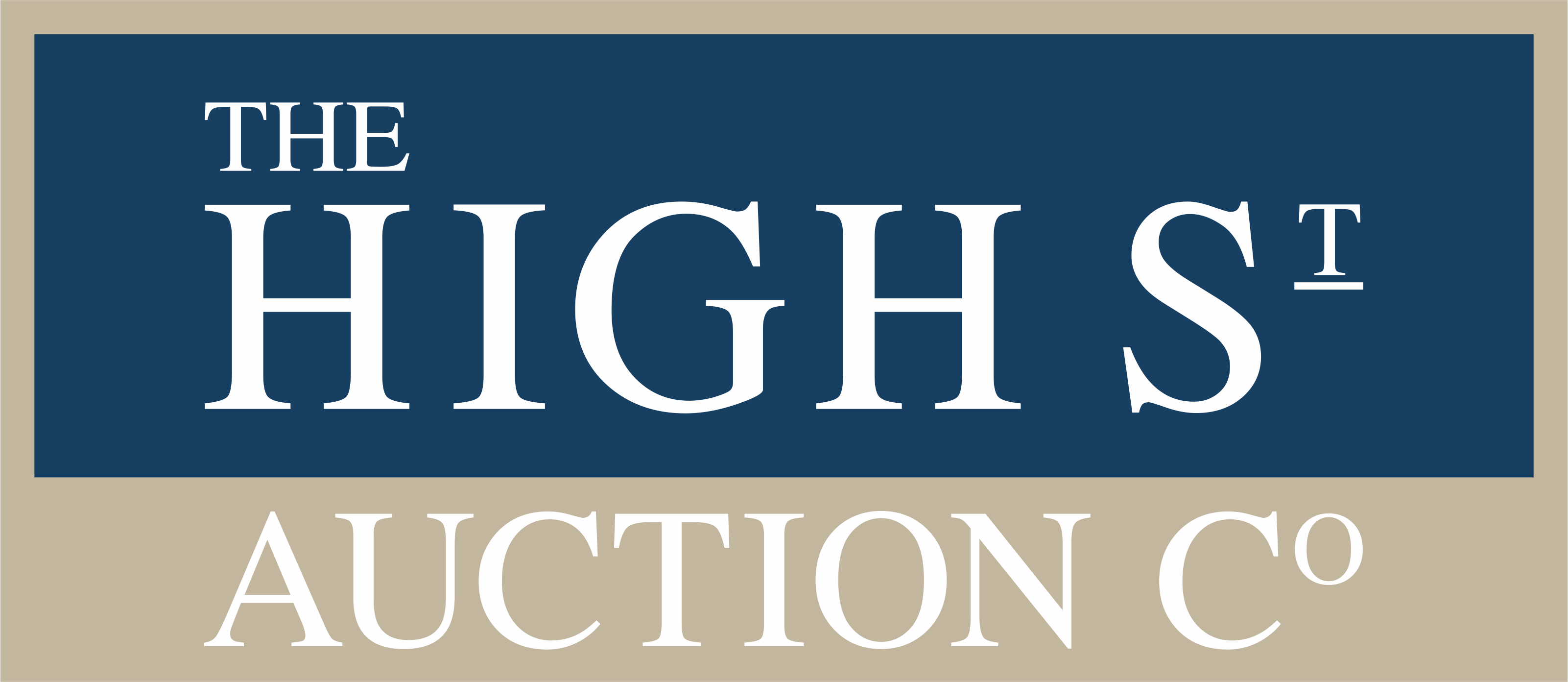 Name: The High Street Auction Company
Name: The High Street Auction Company
Property Auctioneers
Appreciating Property Value
 Name: Touch Point Retail
Name: Touch Point Retail Smart Interior Design
Cliff Jacobs (Nat Dpl Hotel Man (UJ). MPRE. GA Level 5 TEFL) Managing Principal / CEO Exquisite Hotel Consultants (Pty) Ltd Mobile: +27 (0) 84 413 1071 (WhatsApp only) / +27 (0) 61 716 6951 (WhatsApp only) Email: cliff@exquisitehotelconsultants.com Web: https://www.exquisitehotelconsultants.com © All rights reserved Terms and Conditions apply Scroll down to view our Hospitality Properties and Businesses for sale or lease or lease-to-buy or partnership arrangement or management agreement arrangement